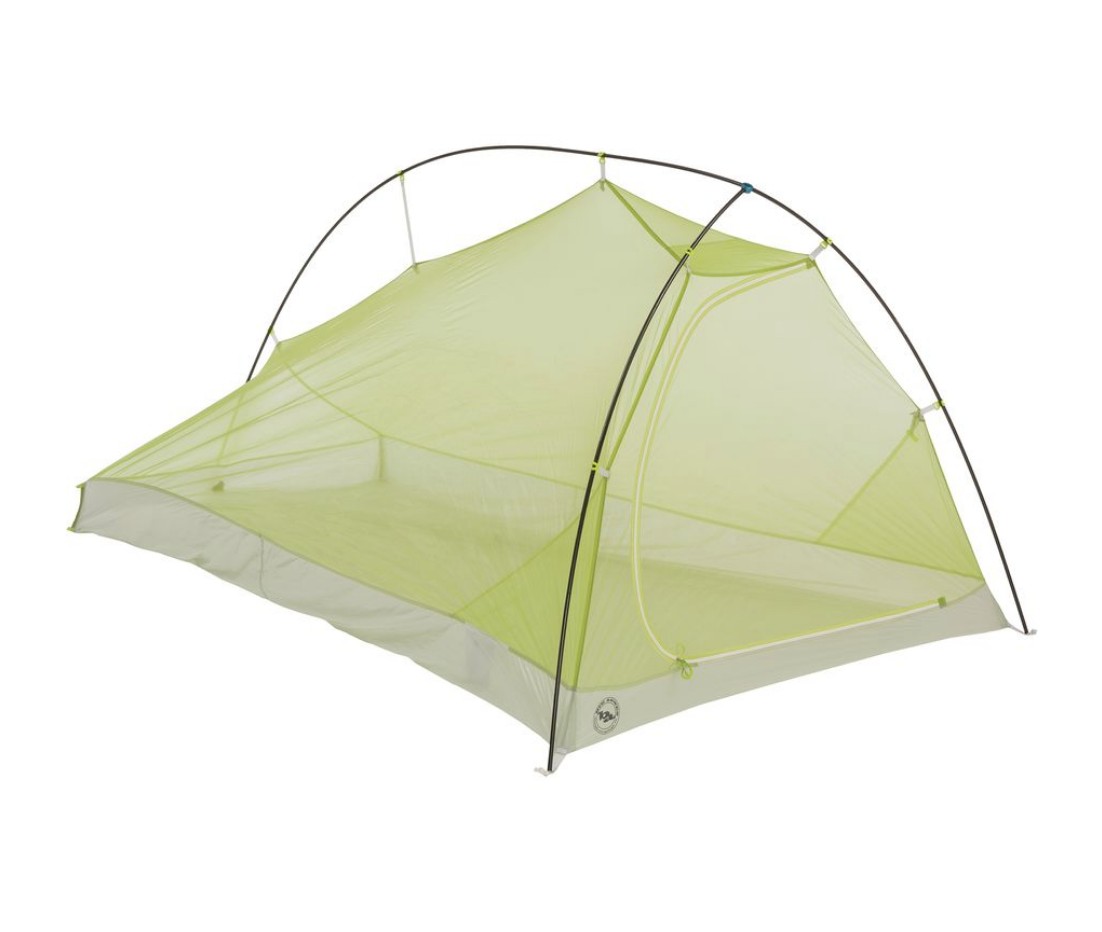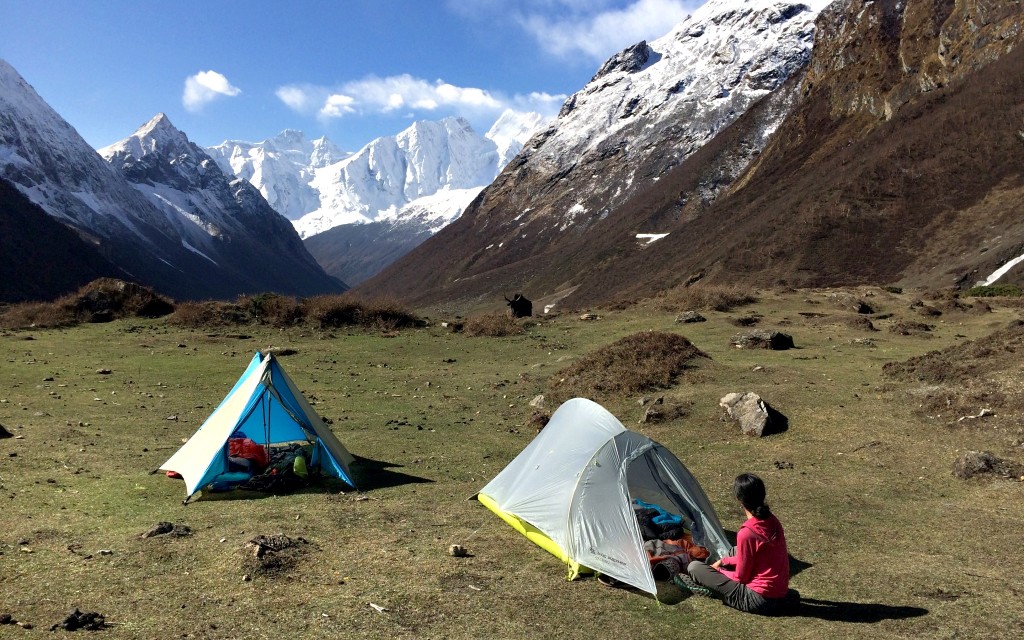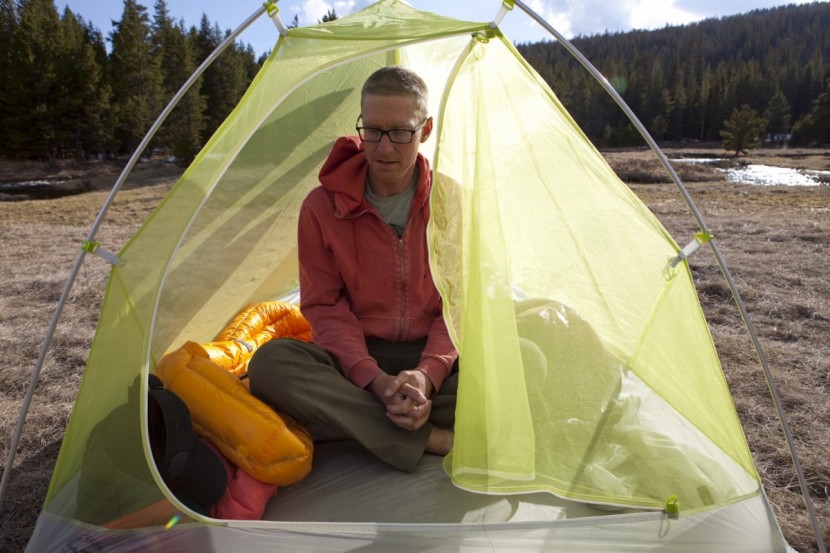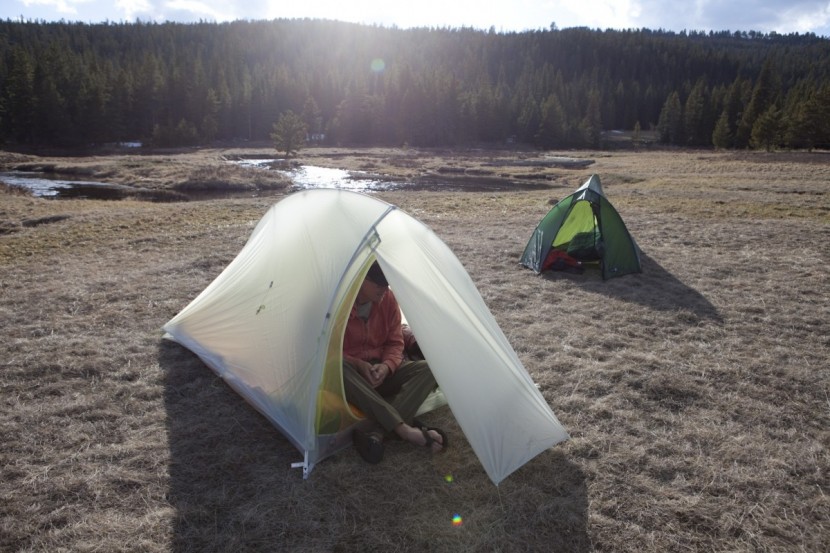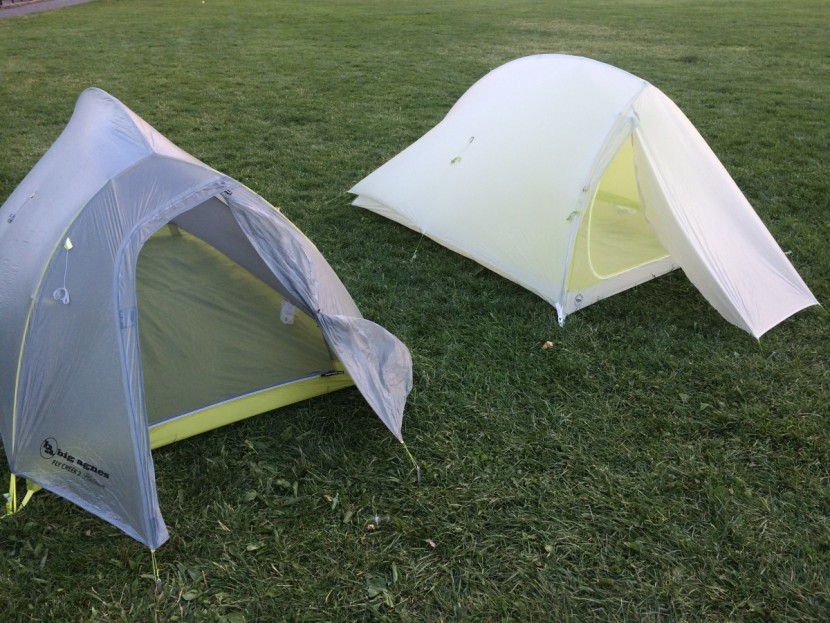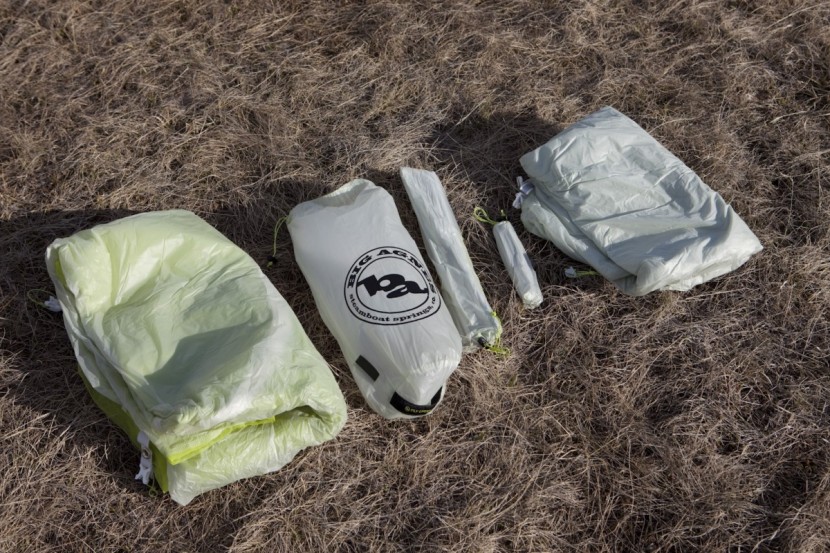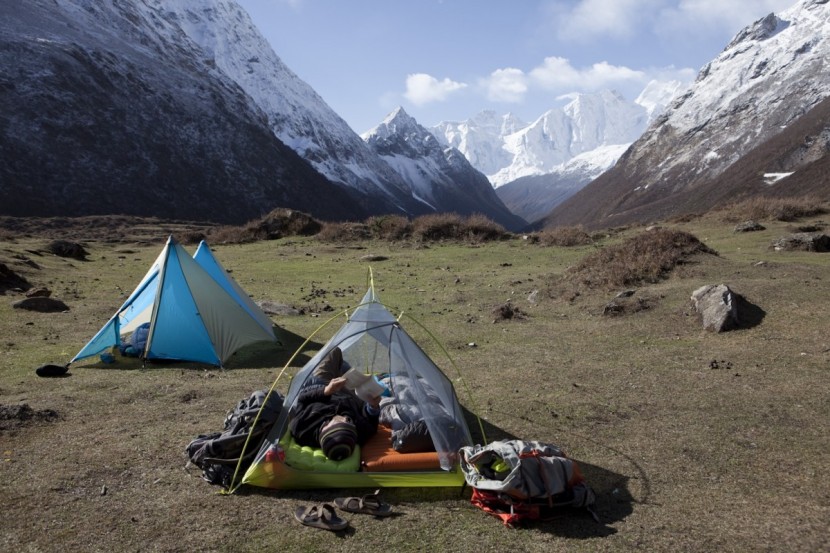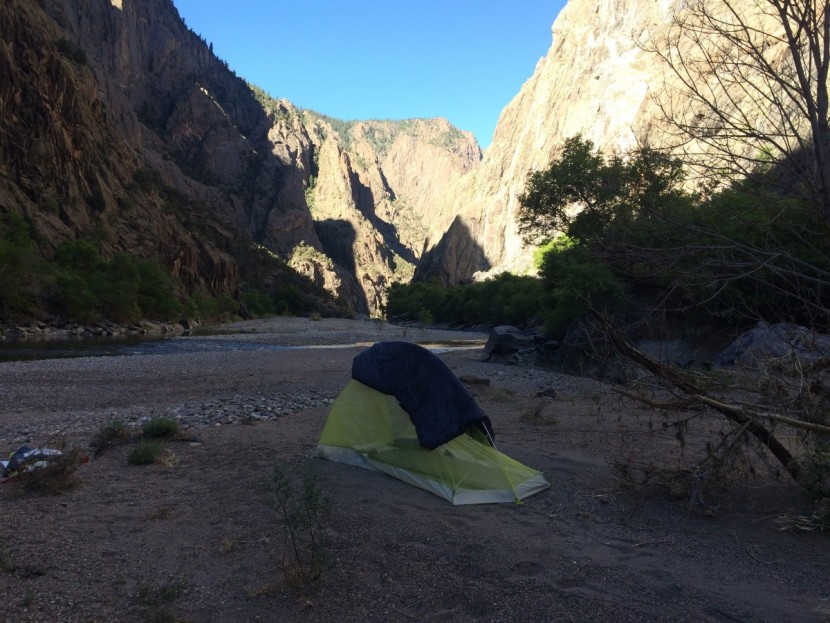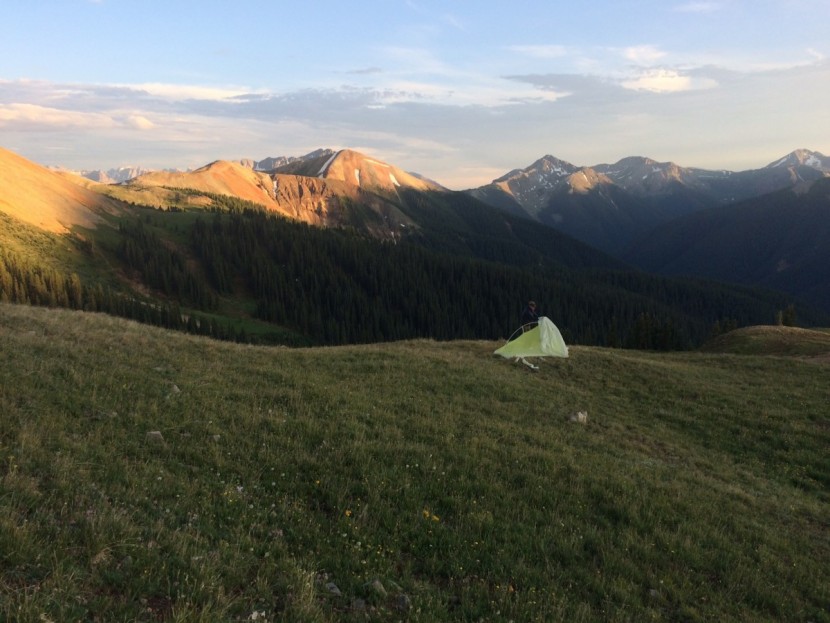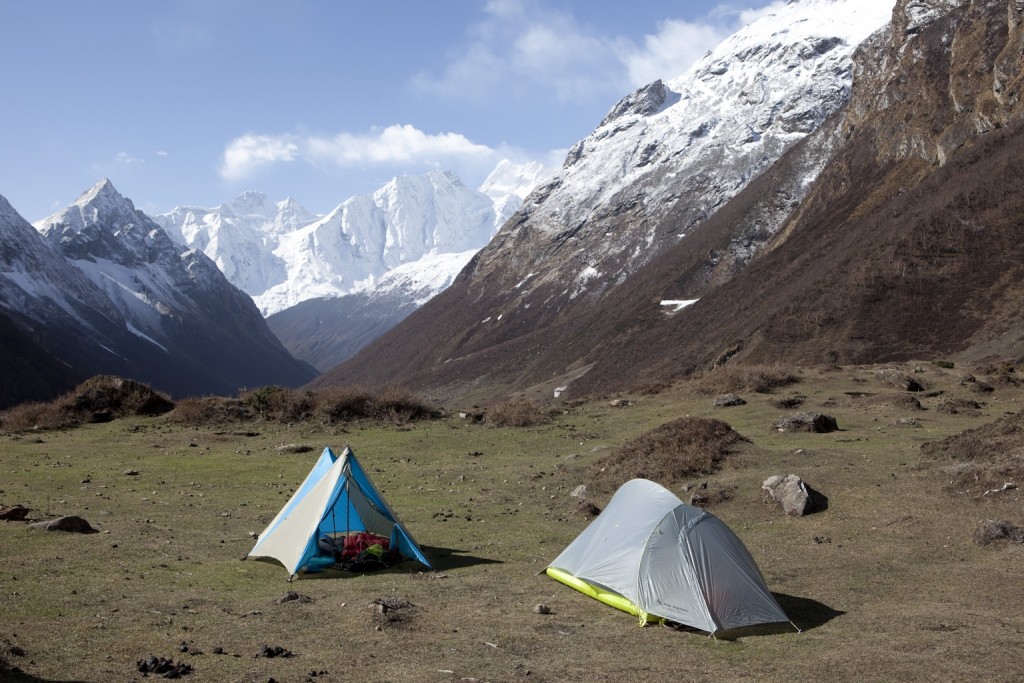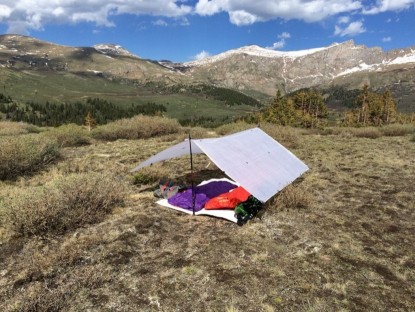Big Agnes Fly Creek HV2 Platinum Review
Our Verdict
Our Analysis and Test Results
Testing the Fly Creek series for many years, we've been able to see the many iterations of this tent. While the Fly Creek HV2 excels in protection from the elements with its double-walled construction, it doesn't offer a whole lot of space for living with two people. Even with its new design elements that make it slightly wider and taller, it's not our favorite free-standing tent option.
Livability
While its fully enclosed double wall design offers privacy, it is pretty cramped for two sleepers and their gear. In construction, it is wider at the shoulders and tapers down at the feet to 42"; this is wide enough for two narrow 20" wide sleeping pads but doesn't work well with pads wider than that, as many are. Despite its higher volume redesign, there is no way that two people can sit up inside this tent together, making waiting out a storm a napping affair.
A curious new feature is the single front vestibule with a small side entry door. We found this door quite small and awkward for crawling through, in stark contrast to the double side doors on more comfortable tents. While the design is meant to increase the covered vestibule space for storing gear, the fact is that when a fully packed bag is present, its nearly impossible to enter and exit the tent with ease.
One method to negate this is to release one stake to allow for a bigger opening, but when the vestibule is full of gear, we find it hard to re-stake it at night. This makes bringing a pee bottle crucial, or you'll find yourself waking up your sleeping partner. The take-away? This is a much better tent for single-person use or when you don't have two fully loaded packs and two people.
Weight
With everything included, this tent weighs 2 pounds 1.7 ounces. This figure includes 11 stakes, which are lightweight and plenty strong. Bringing fewer stakes could lower the trail weight a little bit, but you wouldn't be able to guy this tent out. A bare minimum of four stakes is needed for it to stay erect, but it will be much more solid using eight, or the full 11!
For how complex a tent it is, and how much fabric and poles are needed, it is awe-inspiring that a tent could be this light, and dividing the weight between two people indeed qualifies it as ultralight! It's a great option for those seeking to lower packed weight on the trail.
Weather Resistance
The Polyurethane treated ripstop SilNylon featured in the construction of the rainfly on this tent does an effective job of keeping its inhabitants dry during a storm. It's super lightweight construction isn't best for the snow but does well in the rain.
When camping at 15,000ft. in the Himalayas during testing, this tent and managed to stay dry through the night. On the other hand, this tent was not as well equipped to handle high winds. The single ridgepole design leaves two wide flat faces on either side of the tent that are like giant sails if the wind hits broadside. For that reason, there are dual guy lines already in place on each broadside, as well as guy-out lines on either pole next to the door.
While they add stability, we found that the main lines attach to each side are a bit short, and couldn't be stretched out as far as we would have liked. Don't get us wrong, this tent can undoubtedly handle its share of bad weather, but is more prone to being deformed by wind than most others in this review. As a result, take the time to find a protected spot if you know bad weather is going to hit.
Adaptability
Like most double-wall tents, it can be set up either with the rain fly on or without on nights with clear weather, as we often did. Used this way, we like how the whole inside the tent is just mesh, which allows us great views before falling. As we discovered in Nepal, you will certainly survive a night out in the snow in this tent. However, it is necessary to constantly bang at the sides to shed snow, as too much of a load will cause the triangular pole system to torque, and the tent will collapse. This scenario could mean that you may not get much sleep!
If you purchase the footprint, you can set it up in “fast fly” mode, which is the rain fly over the top of the poles, in the manner of a single wall tarp, and leave the inner tent at home. This arrangement reduces the weight to one pound! It adds another level of versatility. You just need a set of poles for this design.
Ease of Setup
This tent is intuitive and easy to set up. Users familiar with backpacking tents will find a familiar set up pattern: assemble the poles, put the pole ends in the grommets at the corners and back of the tent, clip up the tent body to the poles, and stake out the corners. Finally, throw on the rainfly, fasten it to the corners, and stake out the vestibule. If it is breezy, it is easier to stake out the main tent body before trying to attach the poles, thereby holding the tent in place.
Value
This is an expensive double wall dedicated pole tent that is going to dent the wallet. Although it does shave a few ounces from the less expensive tents of similar design, it is considerably more expensive. In our opinion, the design and materials do not necessarily warrant the high price tag, especially with higher value options out there.
Conclusion
The Big Agnes Fly Creek HV2 Platinum is an extremely light free-standing tent. For those who don't carry trekking poles on their adventures and want the lightest freestanding tent money can buy, this is your pick. That said, it does not come cheap, and we think there are higher performing models given its lack of livable room and questionable performance in super heavy snow conditions.


